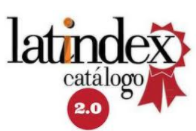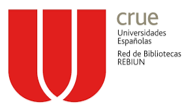Theoretical contributions for the study of cross-border cooperation in double periphery sub-state units
DOI:
https://doi.org/10.35305/cc.vi132.95Keywords:
cross-border cooperation, substate units, double periphery, borders, bioceanic corridorsAbstract
This article proposes a theoretical approach to the study of cross-border cooperation of double-periphery sub-state units. That is, the cross-border cooperation actions of sub-state units on the periphery of a State that, in turn, is inserted on the periphery of the international system. The study of cross-border cooperation is a key international field of action for sub-state units under this condition. The article is made up of three parts. The first part addresses, from a theoretical point of view, the conceptualization of double periphery. The analysis focuses on the variables that determine double dependency: geographic isolation, social cohesion and mobility, the quality of leadership, institutional instability, the ability to think of a model of self-development, and productive articulation and value chains. The second section is dedicated to the cross-border cooperation of the double periphery units, as a tool to overcome this condition and a strategy for sub-state development. Finally, some final thoughts are presented.
Downloads
Downloads
Published
How to Cite
Issue
Section
License

This work is licensed under a Creative Commons Attribution-ShareAlike 4.0 International License.
Aquellos autores/as que tengan publicaciones con esta revista, aceptan los términos siguientes:
- Los autores/as conservarán sus derechos de autor y garantizarán a la revista el derecho de primera publicación de su obra, el cuál estará simultáneamente sujeto a la Licencia Creative Commons Reconocimiento-NoComercial-CompartirIgual 4.0.
- Los autores/as podrán adoptar otros acuerdos de licencia no exclusiva de distribución de la versión de la obra publicada (p. ej.: depositarla en un archivo telemático institucional o publicarla en un volumen monográfico) siempre que se indique la publicación inicial en esta revista.
- Se permite y recomienda a los autores/as difundir su obra a través de Internet (p. ej.: en archivos telemáticos institucionales o en su página web) antes y durante el proceso de envío, lo cual puede producir intercambios interesantes y aumentar las citas de la obra publicada.
















